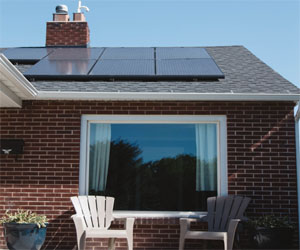


Strategies And Implications

Higher yields in agriculture are not just a desire but a necessity to meet the ever-growing global demand for food and other agricultural products. Achieving higher yields is crucial for improving food security, sustaining economic growth, and reducing the environmental footprint of farming. In this article, we will explore the importance of higher yields in agriculture, the strategies employed to achieve them, and the implications for our world.
The Significance Of Higher Yields
Higher yields in agriculture refer to the increased production of crops, livestock, or other agricultural products per unit of land, water, or other resources. This increase in productivity is essential for several reasons:
1. Food Security: With a global population that continues to expand, the need for increased food production is evident. Higher yields help ensure that there is enough food to feed everyone.
2. Economic Growth: Agriculture is a significant driver of economic growth in many countries. Higher yields can boost rural economies, create jobs, and increase income for farmers and agricultural businesses.
3. Environmental Sustainability: Efficient farming practices that result in higher yields can help reduce the environmental impact of agriculture. By producing more food with fewer resources, we can minimize habitat destruction, water usage, and greenhouse gas emissions.
Strategies For Achieving Higher Yields
Numerous strategies and technologies contribute to higher yields in agriculture:
1. Improved Crop Varieties: Developing and adopting high-yielding crop varieties through selective breeding and genetic modification is a primary strategy. These varieties are often more disease-resistant and better suited to specific environmental conditions.
2. Precision Agriculture: The use of technology, such as GPS, sensors, and data analysis, allows farmers to make precise decisions about planting, irrigation, and fertilization. This optimizes resource use and boosts yields.
3. Sustainable Practices: Techniques like crop rotation, reduced tillage, and cover cropping can improve soil health and enhance crop yields while minimizing environmental harm.
4. Efficient Water Management: Implementing water-saving irrigation methods like drip or sprinkler systems can help maintain optimal soil moisture and boost crop yields.
5. Pest And Disease Management: Effective pest and disease control measures, including integrated pest management, help protect crops and prevent yield losses.
Implications For The World
Achieving higher yields in agriculture has significant implications for our world:
1. Food Availability: Higher yields ensure a consistent and adequate food supply, reducing the risk of food shortages and price fluctuations.
2. Economic Prosperity: Increased agricultural productivity can drive economic growth, reduce poverty, and improve the livelihoods of farmers and rural communities.
3. Environmental Benefits: Sustainable farming practices that enhance yields can help preserve natural habitats, conserve water, and mitigate climate change.
4. Global Food Security: Higher yields are essential to meeting the Sustainable Development Goals, especially the goal of ending hunger and achieving food security worldwide.
Higher yields in agriculture are not just about producing more; they are about doing so efficiently and sustainably. With a growing global population and increasing environmental challenges, the quest for higher yields becomes ever more critical. Through the adoption of advanced technologies and sustainable practices, we can ensure that agriculture remains a reliable source of food, economic growth, and environmental stewardship for generations to come.






A Fundamental Right And Social Imperative
 One of the critical challenges in addressing affordable housing is the ever-increasing demand. As more people move to urban centers in search of better economic opportunities, housing markets become strained. Limited supply and increasing demand often result in skyrocketing housing prices, pushing the cost of living beyond the means of many.
One of the critical challenges in addressing affordable housing is the ever-increasing demand. As more people move to urban centers in search of better economic opportunities, housing markets become strained. Limited supply and increasing demand often result in skyrocketing housing prices, pushing the cost of living beyond the means of many.
The consequences of unaffordable housing are far-reaching. Families are forced to live in overcrowded and substandard conditions, leading to health issues and reduced quality of life. Homelessness becomes a tragic reality for some, further exacerbating social problems. Moreover, the lack of affordable housing can perpetuate cycles of poverty, as families are left with limited resources for education, healthcare, and other essential services.






The Hidden Foundation Of Plant Vitality
 Soil Conditions: Soil quality, structure, and composition significantly affect root health. Well-draining, aerated soil with an optimal balance of organic matter and nutrients is crucial for healthy root development.
Soil Conditions: Soil quality, structure, and composition significantly affect root health. Well-draining, aerated soil with an optimal balance of organic matter and nutrients is crucial for healthy root development.
Nutrient Availability: The availability of essential nutrients, such as nitrogen, phosphorus, and potassium, is essential for root growth. Imbalances or deficiencies can impede root health.
Water Management: Both under- and overwatering can harm roots. Consistent and appropriate watering practices are essential for root vitality.
Disease And Pests: Pathogens and pests can damage roots, leading to root rot or other diseases. Proper plant health management is crucial for preventing such issues.
Aeration: Oxygen is vital for root respiration. Compacted soil or waterlogged conditions can deprive roots of oxygen, leading to poor health.
Temperature And Climate: Extreme temperatures and environmental conditions can stress roots. Plants adapted to specific climates are more likely to have healthier roots.
Implications Of Root Health
Root health has far-reaching implications for plant growth, crop yield, and ecosystem stability:
Enhanced Nutrient Uptake: Healthy roots efficiently absorb essential nutrients, leading to better growth and crop production.
Drought Tolerance: Robust root systems improve a plant's ability to withstand periods of drought by accessing water from deeper soil layers.
Pest And Disease Resistance: Healthy roots are better equipped to defend against pathogens and pests.
Erosion Control: Plant roots stabilize soil and prevent erosion, preserving valuable topsoil.
Navigating A Changing World
 1. Climate Change
1. Climate Change
Climate change, primarily driven by the emission of greenhouse gases such as carbon dioxide and methane, is arguably the most urgent environmental challenge. It results in rising global temperatures, melting glaciers, sea-level rise, and an increase in the frequency and severity of extreme weather events. Climate change has far-reaching impacts on agriculture, water resources, biodiversity, and human societies, with vulnerable communities often bearing the brunt of its consequences.
2. Biodiversity Loss
The loss of biodiversity is a global crisis with ramifications for ecosystems and human well-being. Habitat destruction, pollution, overfishing, and invasive species all contribute to the decline of species and ecosystems. The loss of biodiversity threatens food security, disrupts ecosystems' ability to adapt to environmental changes, and compromises the availability of life-saving medicines derived from nature.
3. Air And Water Pollution
Air and water pollution continue to affect the quality of our environment and public health. Pollutants released from industrial activities, transportation, and agriculture contribute to air pollution, leading to respiratory diseases and other health issues. Water pollution, often caused by untreated sewage, agricultural runoff, and industrial discharges, contaminates water sources, harming aquatic ecosystems and endangering drinking water quality.
4. Deforestation
Deforestation, primarily driven by agricultural expansion, urbanization, and illegal logging, results in the loss of vital forests worldwide. Forests play a critical role in sequestering carbon, preserving biodiversity, and regulating local and global climates. The loss of forests contributes to carbon emissions, soil degradation, and the disruption of countless ecosystems.
A Bright Path To Sustainable Energy
 Design And Planning: Once the assessment is complete, a customized solar system design is created. This design takes into consideration your energy requirements and the available space for solar panels.
Design And Planning: Once the assessment is complete, a customized solar system design is created. This design takes into consideration your energy requirements and the available space for solar panels.
Permitting: Before installation can commence, you'll need to secure necessary permits and approvals from local authorities. Your solar installation provider will assist you with this essential step.
Installation: The solar panels and related equipment, such as inverters and mounting systems, are professionally installed on your property. These panels are strategically placed to maximize exposure to sunlight.
Connection To The Grid: In many cases, residential solar systems are connected to the energy grid. This connection enables excess energy to be sent back to the grid, often earning you credits or compensation.
Testing And Inspection: After installation, the system undergoes thorough testing to ensure it is functioning correctly. Inspections may also be conducted to verify compliance with local regulations.
A Sustainable Future
 Defining Environmentally Friendly Homes
Defining Environmentally Friendly Homes
Environmentally friendly homes, often referred to as eco-friendly or green homes, are constructed and operated with a focus on reducing their impact on the environment. These homes adopt a holistic approach to sustainability, addressing various aspects of the building's design, construction, and operation. The goal is to minimize resource consumption, reduce energy usage, and limit greenhouse gas emissions.
Key Features Of Environmentally Friendly Homes
Energy Efficiency: Environmentally friendly homes prioritize energy efficiency through measures like well-insulated walls, roofs, and windows. They often incorporate high-efficiency heating and cooling systems and utilize energy-efficient lighting and appliances to reduce energy consumption.
Renewable Energy Sources: Many eco-friendly homes feature renewable energy sources such as solar panels, wind turbines, or geothermal heating and cooling systems. These technologies allow homeowners to generate their own clean energy and even feed excess energy back into the grid.
Water Efficiency: Water conservation is a critical component of environmentally friendly homes. Features like low-flow faucets, water-efficient appliances, and rainwater harvesting systems help reduce water consumption and lower utility bills.
Sustainable Materials: The construction of these homes often relies on sustainable and recycled materials, such as reclaimed wood, bamboo flooring, and recycled metal. This not only reduces the demand for new resources but also minimizes waste.
Indoor Air Quality: Environmentally friendly homes prioritize indoor air quality through the use of non-toxic and low-VOC (volatile organic compounds) paints and finishes. Additionally, efficient ventilation systems promote clean and healthy indoor air.